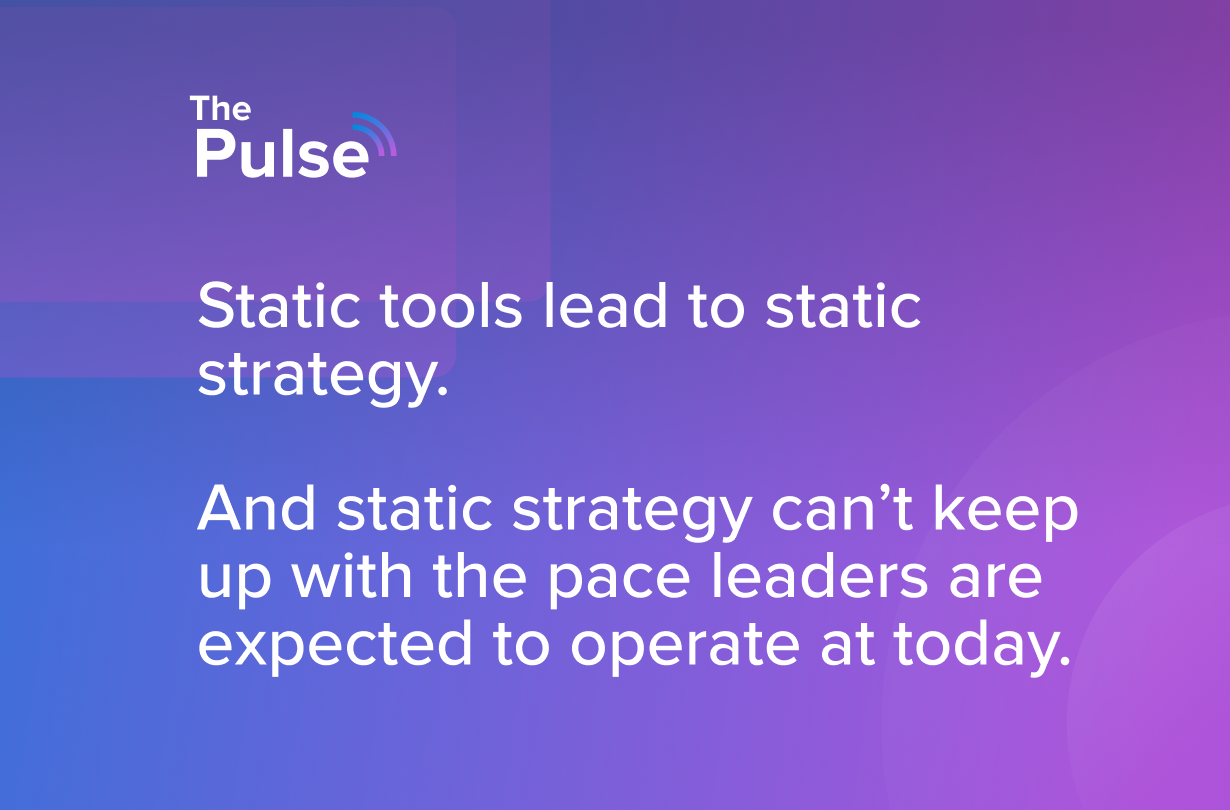.jpg)
The process of strategic planning is a foundational element of the business world, and a strategic plan can be found at the core of any successful company. Why, then, can two organizations go through the entire process of conceptualizing a plan and deploying it, but see different results? This is because the stage of strategic planning in the life cycle of a business can often be rushed, leading to complications later down the road. We've created this blog to briefly discuss the strategic planning process and its potential impact on your business to aid in this process.
Important Elements of a Strategic Plan
Before we can dive into the steps and the process of what strategic planning can look like, it is helpful to identify the key elements that will be found in a successful plan. The features that you will find in different companies' plans will vary depending on their purpose for creating the document. One example would be creating a strategic plan for the launch of a business compared to the plan for launching a new product.
The strategic plan for launching a new business will be much longer and more comprehensive than the one only pertaining to a new product line. With that said, here are some significant elements of strategic plans that could apply to both situations.
- Vision & Mission Statements: While more common in initial plans for businesses starting out, these statements lay out the key ideas of a company. The vision statement explains what your business will look like in the future, and a mission statement defines the "why" behind your business's work.
- Goals: A well-put-together strategic plan will include short-term and long-term goals for the organization that aligns with the overall vision. Some short-term goals include hiring more employees and increasing sales by 5% for the quarter. A long-term goal may look like expanding the business into another state or states.
- Performance Indicators: Key Performance Indicators (KPIs) are a vital aspect of a strategic plan. These measurable items allow a team to accurately track performance in specific areas and identify what sections may need extra support or attention to stay on track for business goals. Some examples of KPIs include cost per lead, employee retention, customer turnover, and net profit.
- Review and Action Process: There should be a detailed account of how you plan to analyze business performance using tools like a SWOT (strengths, weaknesses, opportunities, and threats) analysis. After data is collected from these reviews, an actionable plan must be in place to correct the areas that are not hitting their outlined goals.
All of the elements involved in creating a strategic plan can complicate business processes if done manually by an individual or small team. Choosing to partner with a third-party platform that can manage the execution of a strategic plan is often worth the investment. That is why we created Elate. A platform that empowers your company to easily incorporate a goal-setting framework to increase visibility and alignment on cross-functional initiatives.
What are the Steps in Strategic Planning?
Some teams strictly adhere to a specific number of steps that work for their strategic plan. In reality, you can have as many or as few steps in your planning process as you want. As long as all of your key elements are defined and explained in enough detail, there is no need to create an exhaustingly extended plan. However, there are some steps that you would see across most successful strategic plans, and here are the ones that tend to appear most often.
- A common first step in the strategic planning process is creating or revising the vision and mission statements. This establishes a fresh viewpoint from which to analyze your business. It may have been several years since these statements have been changed, and you may be surprised to discover how different your business is.
- The next advisable move would be to conduct an analysis of your operations. This can be a SWOT or PESTLE (Political, Economic, Sociological, Technological, Legal, Environmental) analysis, VRIO (Valuable, Rare, Inimitable, Organized) framework, or any other standard tools used to evaluate a business. Identifying the areas that are performing well and underperforming will allow you to make educated decisions on continuing or changing processes.
- Following an analysis of your operations, it would be smart to establish new goals moving forward based on the data collected. The new goals will allow teams to have a clear direction moving forward.
- Once your plan has a defined vision for the future, operations have been analyzed, and new goals have been created. It’s time to execute the plan. This is the most involved step as it involves all teams and departments implementing new strategies and methodologies while still being on the same page. Managers should keep a close eye on performance to ensure everything runs smoothly while the implementation occurs.
- While some may think that implementation would be the last step, evaluating how the plan was executed is almost as crucial as a successful implementation itself. There needs to be a constant review of progress to ensure the right decisions are being made.
This is just one of many strategic planning examples that serve as a blueprint that aids an organization in staying on track to achieve its goals. The plan should act as a living document that is looked at and reviewed on a consistent basis to ensure the company is continually operating at an optimal level.
Elate: Execute Your Plans with Confidence
Operating a successful business requires a high level of adaptation, but too much change can cause more harm than good. That is why our platform does not fundamentally change anything about how you work, but makes your planning and management process more effortless. Four ways we are able to achieve this is by:
- In-house OKR integration
- Seamless set-up for your objectives on the platform
- Operations strategy services for your team
- Easy transfer of your data to our dashboard
Elate also integrates with popular tools like Salesforce, Hubspot, Quickbooks, and Jira to allow seamless workflow transitions.
If you are ready to take your strategic planning to the next level, contact us today.


